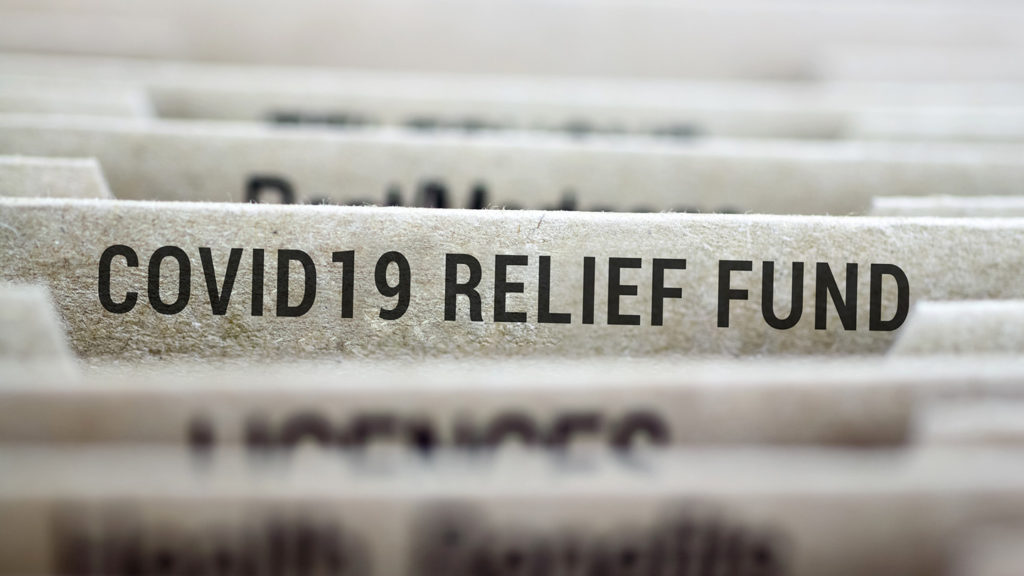
An audit of Phase 2 distributions from the Provider Relief Fund has revealed approximately $18.4 million in potential overpayments that a federal watchdog agency says should be recovered from healthcare providers.
That stance concerns senior living provider groups who said that providers were “under extreme duress” and given little time to understand the application, let alone given much guidance at the time of distribution on what information would be required to track.
“If these ‘overpaid’ providers did not have enough COVID-related expenses or lost revenues to offset the amounts received, the balance would have already been returned to HRSA,” LeadingAge Vice President of Integrated Services and Managed Care Nicole Fallon told McKnight’s Senior Living. “In cases where the provider had enough COVID-related expenses and lost revenues to offset the amounts received, then the funds were used for the purpose for which Congress intended, and they should not be recouped.”
Fallon added that Phase 2 fund recipients already submitted required PRF reports on how those funds were used.
Argentum said it welcomed the review amid long-held concerns about oversight of the PRF, the “onerous” application process and “disparities” in relief funding. The organization also said any repayment methodologies “should reflect the disparity in funding that devastated so many communities.”
The National Center for Assisted Living called the PRF a “critical lifeline” for providers during the pandemic.
“For assisted living, the Phase 2 tranche was welcomed after the profession had been ignored by public health officials for pandemic relief for months,” NCAL Executive Director LaShuan Bethea told McKnight’s Senior Living. “NCAL continues to support reasonable efforts to ensure the proper use of the Provider Relief Funds. On the whole, the program appears to have been a great success.”
Using a sample of 150 providers, including assisted living providers, the Office of the Inspector General released a report last week that found that the Health Resources and Services Administration incorrectly calculated PRF payments for 17 of those providers, amounting to $18.4 million in potential overpayments. Based on the sample, HRSA’s estimated potential total overpayments to providers in its Phase 2 distributions could total $159.4 million — that’s 3.3% of the total PRF payment amount audited.
Those findings, Fallon said, suggest that HRSA “largely got it right under incredibly difficult circumstances.”
“We appreciate that at the time of these distributions, the agency always balanced the need to quickly and fairly distribute funds to providers who were in financial dire straits, battling a still very new COVID-19 virus with the need to be good stewards of taxpayer dollars,” Fallon said.
The OIG audit covered more than 73,000 tax-filing taxpayer identification numbers for those healthcare providers who received $10,000 or more under the Phase 2 general distribution. According to the OIG, the potential overpayments occurred because certain HRSA procedures for processing and reviewing providers’ PRF applications and supporting documentation did not ensure those payments were correctly calculated or supported by appropriate documentation.
The OIG recommended that HRSA recover the identified overpayments, require providers to submit supporting documentation for all revenue information provided on future applications, and modify its application to require providers to double-check their figures, among other recommendations.
HRSA partially concurred with the findings in the report and said that it would seek repayment from providers where it can verify overpayments.
A look back at the PRF
The federal government created the PRF in March 2020 through the Coronavirus Aid, Relief and Economic Security (CARES) Act to provide $135 billion in funding to healthcare providers to cover pandemic-related expenses and lost revenue. Eligible providers were those enrolled in Medicare, Medicaid or the Children’s Health Insurance Program.
Most relief payments — $85 billion — went to hospital-based health systems and hospital-affiliated providers, whereas assisted living communities and nursing homes received $11.4 billion, or 9.4% of the PRF payments. Most funding to long-term care providers went to skilled nursing facilities.
“Senior living providers collectively incurred more than $30 billion in COVID-related losses to protect the most vulnerable populations, yet received extraordinarily little federal relief,” an Argentum spokesman told McKnight’s Senior Living. “The sustained losses, coupled with increasing strain on the workforce, left many assisted living communities operating at a financial loss, reducing admissions and relying on overtime shifts and pricey staffing agencies to maintain operations. Many have scaled back operations or have been forced to close.”
Assisted living providers first were eligible for funding during application for Phase 2 distributions, and they also were eligible for Phase 3 distributions that covered pandemic expenses from the first half of 2020. Phase 4 distributions were not released until September 2021, when $17 billion was allocated for assisted living operators and others serving Medicaid beneficiaries after congressional and healthcare industry pressure following COVID-19 case surges.
Congress’ passage of the Fiscal Responsibility Act of 2023 stopped PRF and American Rescue Plan Rural Distribution payments in June 2023 and included the clawback of $28 billion in unspent and uncommitted COVID-related funding.
Last fall, a Government Accountability Office report on the PRF found that HRSA misappropriated $2.6 billion in funding, twice the amount that assisted living providers received in total PRF dollars. Although assisted living providers were not among those being asked to return PRF payments due to ineligibility or error at that time, the report reopened old wounds among industry advocates, who said that assisted living providers lost out on funding due to PRF mismanagement.


